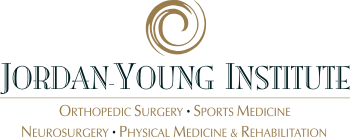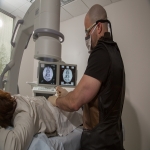Ask the Expert: Is Regenerative Medicine Right for Me?
David Levi, MD and Scott Horn, DO
There has been a lot of attention given to regenerative medicine over the past few years in the United States. A lot of professional athletes utilize these treatments to stay on the top of their game. Many other average Joes and Josies have used them to alleviate pain, avoid surgery, and return to the activities they enjoy. So, is the hype worth it? Is this the next big thing in medicine?
The short answer is yes and no. We’ll explain why, but first, let’s explain regenerative medicine.
The National Institutes of Health defines regenerative medicine as the process of creating living, functional tissues to repair or replace tissue or organ function lost due to age, disease, damage, or congenital defects.
For many areas of health, these processes show great possibility to help a lot of people. There are many clinical trials happening now – they are researching its benefits for degenerative neurological diseases; creating pancreas islets that may help cure diabetes; tissue-engineered heart muscle that may repair human hearts damaged by attack or disease. The potential for improving many lives and offering real solutions to some of the most challenging medical problems is very exciting.
At Jordan-Young Institute, we use regenerative medicine to seek to alleviate symptoms associated with painful musculoskeletal conditions, as well as potentially repair tissue damaged by degenerative conditions, disease, or injury. We offer these two treatment options that utilize one’s own cells or growth factors in order to amplify the body’s healing response or reduce inflammation and pain:
Platelet-rich plasma, often referred to as PRP, uses growth factors from your own blood which are injected into the damaged tissue to stimulate healing.
Bone Marrow Concentrate (Stem Cell Therapy) uses stem cells and growth factors from your bone marrow, which are injected into the damaged tissue to stimulate healing.
Now, let’s explain why it may or may not be right for you.
1. Does it work? Although there is scientific research showing benefit for many joint and spine problems, a great deal is still unknown. If you choose to have a consultation, we will discuss the realistic expectations of this therapy specific to your individual case and determine if you are a candidate based on current science. We practice the responsible use of these innovative treatments and will help navigate you through the confusion, controversy, and science surrounding these therapies. These treatments are not currently covered by insurance.
We treat our patients with the highest level of integrity, so when it comes to paying out-of-pocket for a treatment, we act with discretion when agreeing that a patient is a candidate. The bottom line is this: It may work for you. It may not work for you. We do our best to make sure you are not wasting your time or your money.
2. What diagnoses might benefit from Regenerative Medicine?
a. Tendinopathy/tendinitis (such as tennis elbow)
b. Partial tendon tears (such as hamstring)
c. Minor osteoarthritis (in particular the knee)
d. Ligament sprains
e. Recurrent bursitis (such as hip bursitis)
f. Low back pain caused by tears in the disc
3. How invasive is it? All procedures are performed in our office and take about 30 minutes.
a. PRP is pretty simple. A small amount of blood is taken from your arm. It is then processed through a centrifuge device to concentrate the platelets, which hold the growth factors responsible for the healing properties. The painful area is numbed, then the PRP is injected into the painful area under image ultrasound or x-ray.
b. Bone Marrow Concentrate is similar. Instead of using blood, a small amount of your bone marrow is removed from the back of your hip area (iliac bone). The area is numbed and, under x-ray guidance, a small amount of liquid bone marrow is pulled into a syringe. The cells and growth factors are then concentrated in a centrifuge. The bone marrow concentrate is then injected into the painful area in a similar manner to the PRP.
We hope this article has given you insight into how Jordan-Young Institute chooses to use Regenerative Medicine. We practice the responsible use of these innovative treatments and will help navigate you through the confusion, controversy, and science surrounding these cutting-edge therapies. Please contact Jordan-Young Institute at 757.490.4802 if you would like to schedule a consultation to learn if this might be right for you.
David Levi, MD and Scott Horn, DO specialize in Physical Medicine & Rehabilitation at Jordan-Young Institute. They focus on non-surgical x-ray guided spinal procedures; non-surgical sports and joint treatments; image-guided spine, joint, and tendon injections; regenerative medicine procedures; epidural and nerve root blocks, and clinical research.

